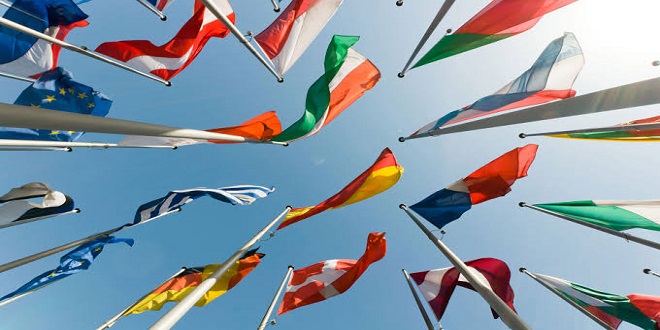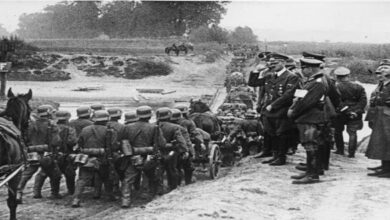History of the law of nations

Introduction
After the Thirty Years’ War, the 1648 Peace of Westphalia created a new political order in Europe which ended with the defeat of France after twenty years of —+ war (1792 to 1813). Large areas of America which had already been incorporated into the European colonial empires were involved, together with their native populations, in the conflicts between their European mother countries (—+ Colonies and Colonial Regime). In 1815 the —+ Vienna Congress formulated a new political order.
Europe
In the Thirty Years’ War (1618 to 1648) the bloody wars of religion that had racked Europe for a century reached their climax. The so-called Holy Roman Empire, whose princes had since 1452 consistently elected a Habsburg as German King and Roman Emperor, was after the Reformation in reality only a confederation of states with certain federal features (- Confederations and Other Unions of States). The Protestant members waged war against the Emperor and formed – alliances with foreign States.
The Ottoman Empire and Europe
The conquests by the Ottoman Empire had spread in all directions. It sounded the ~ Black Sea, held Egypt and North Africa in thrall, controlled the Balkans, and ruled central Hungary as an Ottoman province. In 1623 the Shiite Persians under Shah Abbas conquered Baghdad, but it was regained in 1638 by Sultan Murad IV.
There were also religious and political differences within the Islamic family of States. For this reason, the Ottomans did not take advantage of the “Western” Emperor’s precarious position during the Thirty Years War to launch a new attack on Vienna; only after that war did they renew their movement toward the west.
The European Doctrine of International Law
The large number of political and economic treaties during this period necessitated the publication of treaty collections, but these only made their appearance within the European system of States. With the growth of the middle classes in the many States of Europe, ever more persons in public and private life had to deal with questions that transcended the frontiers of their home country-businessmen manufacturers, ship-owners, merchants, privileged trading companies, insurance companies, judges, lawyers, academic jurists, and philosophers.
“As to your entreaty to send one of your nationals to be accredited to my Celestial Court and to be in control of your country’s trade with China, this request is contrary to all usage of my dynasty and cannot possibly be entertained …. Our ceremonies and code of laws differ so completely from your own that, even if your Envoy were able to acquire the rudiments of our civilization, you could not possibly transplant our manners and customs to your alien soil… Swaying the wide world, I have but one aim in view, namely, to maintain a perfect governance and to fulfill the duties of the State… I set no value on objects strange or ingenious, and have no use for your country’s manufacturers. ”
Last word
The exponents of natural law and rational Enlightenment had, however, an optimistic view of mankind and attempted to construct a peaceful order – as proposed in the Peace of Westphalia for Europe (- Peace, Historical Movements towards).
Following the Duc de Sully’s “Great Design” of 1641 (Europe as a Christian republic), William Penn in his Essay towards the Present and Future Peace of Europe (1693) proposed a European confederation of states which would include Russia and the Ottoman Empire; the States would be represented in its supreme Council according to their annual incomes.




